Flipboard has been used to gather some of the world’s greatest minds together to order to increase awareness, share information, and open our minds to knowledge not often seen throughout mainstream media.
In this Flipboard Find by James Clark, we learn more about The Tragic And Ignored History Of Black Veterans
On a December morning in 1918, Charles Lewis began his last day as a private in the United States Army. Just a month after the end of World War I, Lewis accepted his honorable discharge and left Camp Sherman, in Chillicothe, Ohio, one of the few military facilities that housed black soldiers. He was headed home to Alabama.
The next day he was dead, killed by a lynch mob in Fulton County, Kentucky.
While Lewis was waiting for the southbound train to leave Fulton, the local deputy sheriff boarded the train car, looking for suspects in a robbery. He approached Lewis, demanding to inspect his baggage. The young soldier, still in uniform, declared that he had just been honorably discharged and had never committed a crime in his life. Lewis even provided documents from his commanding officers at Camp Sherman attesting to his excellent service record. An argument broke out between the two and Lewis was charged with assault and resisting arrest.
As Lewis was taken to the county jail in Hickman, Kentucky, news of the altercation spread. A mob of as many as 100 men gathered outside the jail. At midnight, masked men stormed the station, smashed the locks with a sledgehammer, pulled Lewis from his cell, and hanged him. His body, still in uniform, was left for all to see.
Days after his murder, True Democrat, a Louisiana paper, published an editorial entitled, “Nip It in the Bud.”
“The root of the trouble was that the negro thought that being a soldier he was not subject to civil authority,” the editorial read. “The conditions of active warfare and the regulations of army life have probably given these men more exalted ideas of their station in life than really exists and having these ideas they will be guilty of many acts of self-assertion, arrogance and insolence which will not be borne with, in the South at least, and which will be followed by consequences to them, more or less painful.”
Lewis is just one of dozens of African-American veterans who were the targets of racially motivated attacks detailed in “Lynching in America: Targeting Black Veterans,” a report by the Equal Justice Initiative in Alabama. Because a victim’s military service was often overlooked by newspapers and officials at the time, the report cites only the lynching of veterans whose military service was verified by EJI, according to Jennifer Taylor, a staff lawyer and one of the report’s authors. The number of veterans killed during this time period is likely much higher.
The latest report is the follow-up to a larger investigation by EJI published in 2015 that documented more than 4,000 lynchings — extrajudicial killings that often occurred in public — of African-Americans between 1877 and 1950.
The lynching of veterans served a particular purpose: African-Americans who’d served their country with honor posed a threat to the established racial hierarchy that was used to justify Jim Crow-era racism. Their murders were aimed at silencing the powerful voices of dissent against the racist system
The detailed accounts paint a graphic picture of racial violence in America and its insidious impact even on the men who answered their country’s call. It’s a history that was rarely shared publicly, Taylor explained, and so the stories remain mostly unknown.
After the Civil War and the abolition of slavery, the imposition of Jim Crow laws — the system of government-sanctioned segregation and racial bias that existed in the United States until the late 1960s — barred black people from fair access to the political and judicial process in many ways. Between the end of the Civil War and the years after World War II, thousands of black veterans were accosted, assaulted, and attacked. Many were lynched at the hands of mobs and individuals acting under the cover of official authority.
During the Red Summer of 1919, which earned its name from the anti-black riots that erupted in major cities across the country, countless black veterans were attacked. In that year alone, at least 10 were lynched.
Robert Truett, an 18-year old-Army veteran, was hanged in Louise, Mississippi, on July 15, 1919, because he allegedly made an “indecent proposal” to a white woman.
On Aug. 31, 1919, in Bogalusa, Louisiana, Lucius McCarty, an African-American Army veteran was accused of attempting to assault a white woman. A mob of 1,500 people gathered, pumped more than 1,000 rounds into his body, and dragged his corpse behind a car through the town’s black neighborhoods, before throwing the remains into a bonfire.
For many African-Americans, the military, though segregated and still infused with racial tension, offered at least the hope of economic and social mobility, but many returned to communities staunchly and, at times, violently opposed to the idea.
“It often breeded an internal and an external conflict and that played out in situations where people were coming home and were protesting various kinds of mistreatment,” Taylor explained.
Even during and after World War II, a global conflict meant to stem the tide of fascism and end mass genocide, some of the same veterans who fought for those ideals in theaters across the world were victimized in the United States, often for exercising the very rights they fought to protect.
“That veteran status was kind of an opportunity to get up-close exposure to the hypocrisies that had actually existed in the country,” Taylor explained, pointing out that military service had a tendency to shape and impact the way African-American veterans viewed the racial hierarchies that existed in their own communities. “They had to figure out ‘Is that something I’m going to accept, or is that something I’m going to try to figure out how to continue to fight against?’”
On Feb. 8, 1946, Timothy Hood, an honorably discharged Marine, removed the Jim Crow sign from a trolley in Bessemer, Alabama. He was shot repeatedly by the trolley owner, before being arrested. He died in the back of the police car. Less than a month later, J.C. Farmer, a black veteran, was waiting for a bus in Wilson, North Carolina, on Aug. 17, 1946, when he was ordered into a police officer’s patrol car. When Farmer objected, the officer allegedly struck Farmer in the head. In the ensuing scuffle, the officer’s gun went off, shooting its owner in the hand. Within the hour, a mob had formed and Farmer was dead.
In 1943, Maceo Snipes, left his home in Butler, Georgia, to enlist in the Army. Two and a half years later, with an honorable discharge, and $110 to his name, he returned to his family farm in Taylor County. With the war over, cotton, peanuts, and corn became his mission, while farm tools replaced the arms and equipment he carried during his six months in the Pacific theater.
Snipes likely believed that having served his country, he should have the right to vote in it too. On July 17, 1946, he was the only African-American in racially segregated Taylor County to vote in the Democratic primary for governor.
The next day, several white men in a pickup truck came to Snipes’ house and shot him, before driving away unhindered. Two days after making history as the first, and only, African-American in his county to cast a ballot in that election, he died of his wounds.
Fearing more attacks, his family fled, hastily burying his body under cover of darkness. To this day the exact location of his remains is unknown. The killing was listed as self-defense, though the family and historians, have refuted that repeatedly, arguing that it was a lynching.
“You could give so much to your country, and then return to a country that, at that time, gave so little back.”
“You have a person, like Maceo Snipes, who understood the significance of fighting for equal rights and fighting for the rights of all people to enjoy the benefits of this country,” Edward Dubose, a national board member with the National Association for the Advancement of Colored People, told Task & Purpose. For Dubose, a 21-year Army veteran who worked closely with the family of Snipes on efforts to launch a federal investigation of his death, the killing is particularly telling and deeply personal.
“A man was prepared to sacrifice his life, and for him to come back and be killed for engaging in something so sacred — the right to vote — for me, as a veteran, standing on people’s shoulders like Maceo Snipes, and dealing with my own discrimination in the military, it was just very personal,” Dubose said. “You could give so much to your country, and then return to a country that, at that time, gave so little back.”
Today, on the walls of the Taylor County courthouse in Butler, Georgia, are three plaques honoring World War II veterans from the area. One reads “Whites,” and another — where Snipes’ name can be found — is labeled “Colored.” On a third, more recent plaque, Snipes’ name appears again, listed among all of his brothers in arms, whatever their skin color.





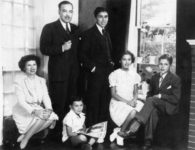
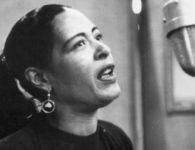
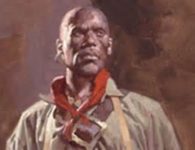
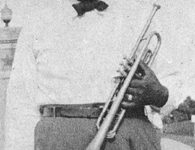
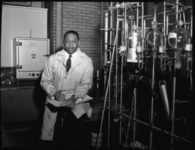



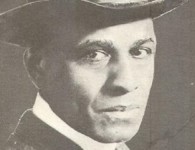

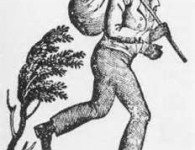
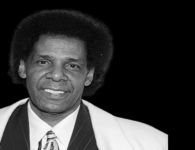
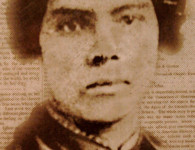
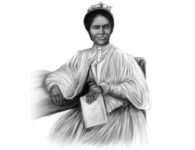


No comments